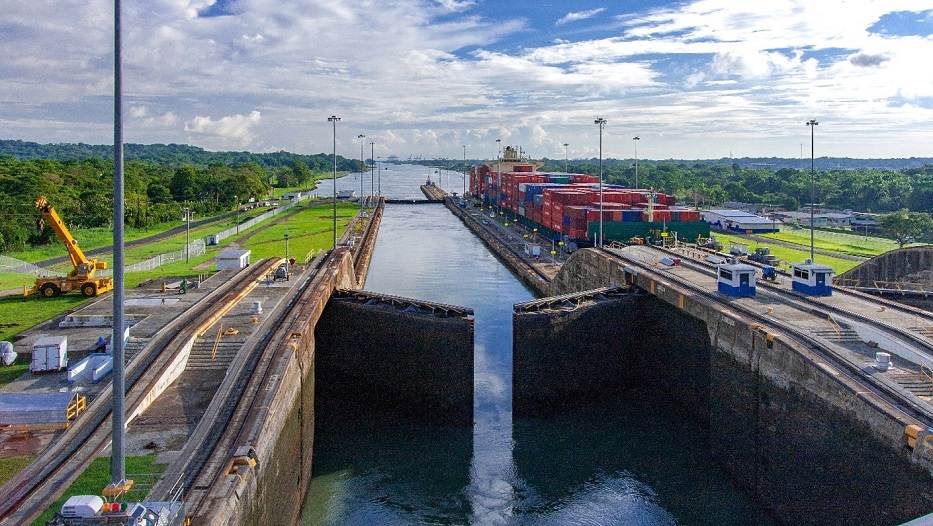Julia Maria Gomez de Avila Segade | 04/08/2023
Panama stands out as a unique economy in Central America thanks to its privileged geostrategic position, which makes it a crucial center for trade, logistics, and banking services. Let’s talk about economic and trade prospects.
This economy is characterized as being predominantly tertiary, which has led it to adopt a distinctive strategy compared to other Ibero-American economies. The region has been able to capitalize on its comparative advantages and has decided to focus on a service economy, which, according to data published by ICEX, accounts for approximately 63% of employment and 67.8% of GDP.
The tertiary sector is based on trade activity, due in part to the Colón Free Zone, the maritime and logistics sector, driven by the Canal, and the finance sector with its International Banking Center.
Moreover, the construction and mining sectors are adding to this dynamic, thus strengthening the economic outlook that, in 2021, enjoyed a 15.3% rebound in GDP. This figure was the result of a partial economic recovery thanks to the logistics activity connected to the Panama Canal and the recent start-up of a copper mine in Donoso, which increased Panamanian exports.
Keys to its development
According to data published in the Panama Economic and Trade Report, updated by ICEX in June 2023:
– The Panama Canal occupies a central place as the country’s most crucial infrastructure, acting as a meeting point for a number of international trade routes. The Canal contributes approximately 20% of the State’s revenue and closed its fiscal year 2022 with a record transit (14,132 transits) of tonnage (518 million tons).
– Wholesale and retail trade accounted for 18.5% of GDP in 2021, employing around 18% of the working population. The Colón Free Zone, the largest free trade zone in the Americas, is a key factor in boosting this sector.
– The financial and insurance activities sector contributed 7.4% of GDP and employed 37,461 workers in 2021. The International Banking Center stands out as one of the most dynamic on the continent.
– The mining sector has experienced significant growth in recent years. In 2019, its expansion was 39% due to the start of exports from the Panama Copper mine. The following year, in 2020, growth remained solid with a 31% increase. However, in 2021, the gross added value of this sector spiked by 115%, which generated significant positive contributions to Panama’s GDP growth.
Strengths of the region
Despite being a country with a small population of approximately 4.3 million people, Panama stands out as the Central American nation with the highest per capita income. Its economy shows a structural soundness that has allowed it to recover from the pandemic at a faster pace than other countries in the region. This is largely due, as the report published by ICEX points out, to its integration into world trade and its position as the main recipient of Foreign Direct Investment (FDI) in Central America.
According to the National Institute of Statistics and Censuses (INEC [Instituto de Estadística y Censo]), as of December 31, 2020, Panama had an FDI stock of $57.981 billion, an increase of 1.1% compared to 2019. The six main investing countries in terms of stock are the United States (19.6%), Colombia (16.8%), Barbados (11.3%), Switzerland (5.9%), United Kingdom (4.7%), and Spain (4.0%), together representing more than 60% of the FDI in Panama.
Investment opportunities
In terms of investment opportunities, the Economic and Trade Report published by ICEX points out that Panama offers advantages such as its strategic position, International Banking Center, flexible trade legislation, and use of the U.S. dollar. It also states that the sectors with the most attractive prospects for investors are:
– Logistics Sector: Panama stands out as the key logistics epicenter in the region, positioning itself as a comprehensive platform for highly relevant transportation and logistics services.
– Tourism Sector: It has established itself as a key point on the Caribbean/Central American tourist route, thanks to significant improvements in connections via ports and airports, as well as international advertising campaigns. To further encourage this growth, there is a Tourism Incentives Law that encourages investment in this sector.
– Public Works: It is in a favorable position to open a new door of opportunities in the area of concessions, thanks to the recent approval of the Law and Regulations on Public-Private Partnerships (PPPs).
– Energy Sector: The increased demand for electricity and the impacts of climate change on hydroelectric generation (approximately 55% of the energy matrix) have created the need to increase and transform the installed generation capacity in Panama. In light of this situation, the National Department of Energy is seeking to diversify the energy matrix through the incorporation of natural gas, aspiring to become the gas hub of Central America.
This evolution also brings opportunities in the field of photovoltaic generation. Moreover, the interconnection with Colombia represents another promising opportunity, as it would allow integration into the SIEPAC (Central American Electrical Interconnection System), a project that has been under study for several years. In this regard, the government plans to invest around US$2 billion in the next few years, focusing investment on generation (around US$500 million), transmission (with approximately US$700 million earmarked for the fourth line) and distributed generation.





